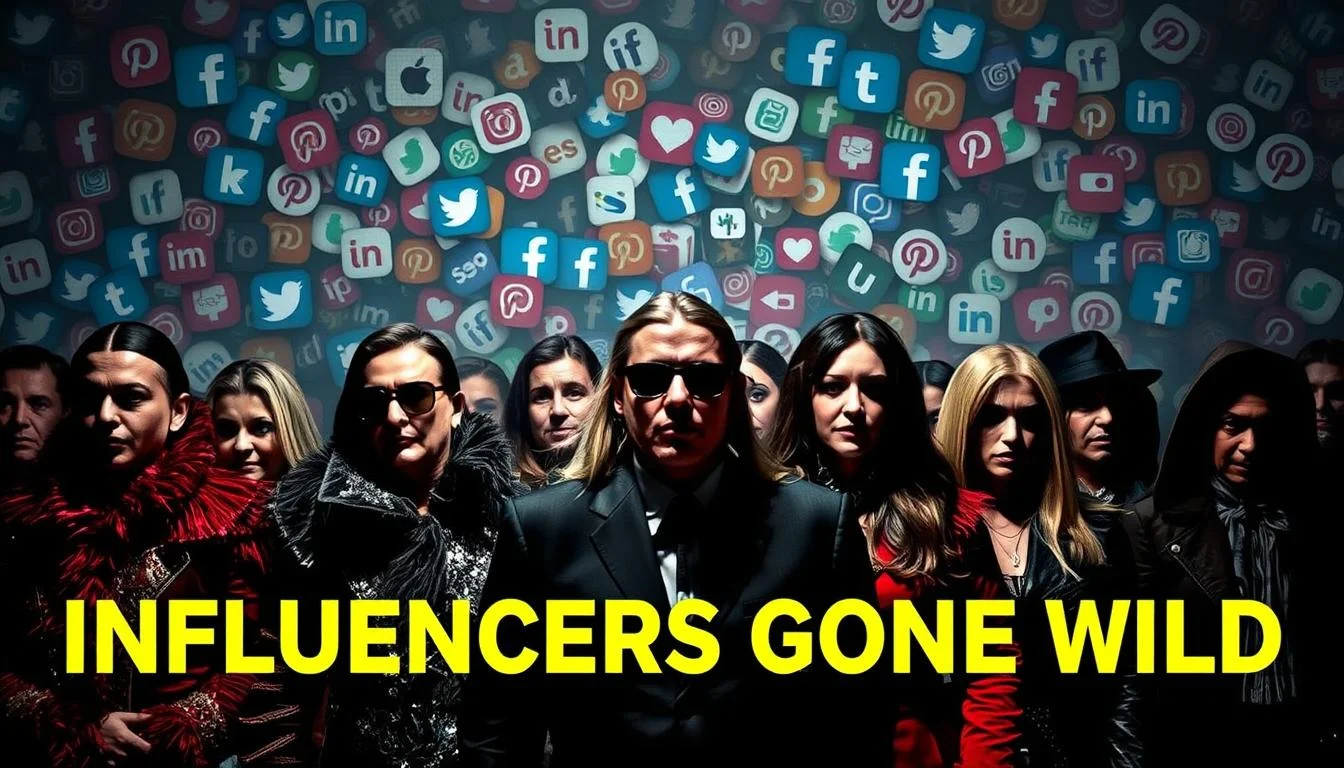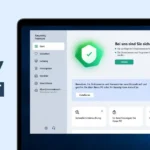Introduction
The rise of social media has created a new kind of celebrity—the influencer. These individuals hold immense power, shaping trends, driving conversations, and building global communities with just a smartphone and internet connection. But in recent years, the phrase “influencers gone wild” has entered public conversation, reflecting a growing trend where online personalities push boundaries to gain attention.
Whether it’s through outrageous stunts, controversial statements, or provocative content, influencers often take risks to maintain relevance in a competitive digital landscape. While these actions may lead to viral fame and lucrative opportunities, they can also bring significant consequences—loss of credibility, backlash from audiences, and damage to long-term brand partnerships.
This article dives deep into the phenomenon of influencers “going wild,” exploring why it happens, the potential risks, and how both creators and brands can navigate this evolving space responsibly.
What Does “Influencers Gone Wild” Mean?
The phrase “influencers gone wild” describes creators who cross typical boundaries of online behavior to capture attention. This may include provocative posts, dramatic public conflicts, sensational claims, or risky stunts. Sometimes, it is a form of authentic self-expression, but more often, it is a calculated move designed to trigger viral reactions.
Social media thrives on attention and engagement. For influencers, being bold or controversial can bring a massive spike in visibility. Yet, what looks like a quick path to fame can often backfire, leading to negative publicity, broken trust, and even career-ending scandals.
Why Do Influencers Go Wild?
There are several powerful drivers behind this trend:
1. The Quest for Virality
In a crowded digital space, millions of posts compete for attention daily. Outrageous or shocking content is more likely to go viral, giving influencers quick access to new audiences.
2. Audience Expectations
Once an influencer builds a reputation for boldness, followers often expect them to continually “top” their previous content. This pressure can push creators into increasingly extreme territory.
3. Financial Incentives
More engagement means more opportunities for brand deals, sponsorships, and platform monetization. Some influencers use wild tactics as shortcuts to boost income.
4. Algorithm Influence
Social media platforms reward engagement—especially shares, comments, and reactions. Controversial posts often perform well in algorithms, motivating influencers to provoke responses.
5. Personal Expression
Not all cases are calculated. For some creators, “going wild” is about breaking free from curated perfection and embracing raw, unfiltered authenticity.
The Risks of Going Too Far
While going wild can bring short-term gains, it carries heavy long-term risks.
-
Loss of Trust: Audiences may view extreme behavior as manipulative or inauthentic. Once credibility is damaged, regaining it is difficult.
-
Brand Fallout: Many companies avoid associating with influencers involved in scandals, especially when brand safety is at risk.
-
Legal Trouble: Misleading promotions, undisclosed sponsorships, or dangerous stunts may lead to lawsuits or regulatory penalties.
-
Mental Health Strain: The constant pressure to shock and the stress of public backlash can lead to burnout, anxiety, and depression.
-
Short-Lived Success: Viral fame can be fleeting. Without genuine value, influencers risk fading as quickly as they rose.
Impact on Brands and the Industry
Brands face their own challenges when influencers go wild. Companies invest heavily in influencer partnerships, but one scandal can harm brand reputation. To protect themselves, many brands are:
-
Implementing stricter vetting processes before signing influencers.
-
Adding morality clauses to contracts, allowing termination if controversies arise.
-
Diversifying influencer partnerships to avoid depending on one face.
-
Monitoring audience sentiment to gauge risks in real time.
-
Prioritizing long-term trust over short-lived viral reach.
This shift shows that while “wild” content may capture attention, brands increasingly value stability, reliability, and alignment with their values.
Balancing Creativity and Responsibility
Not all bold content is harmful. Some influencers successfully push boundaries while maintaining credibility. What sets them apart is intentionality and responsibility.
-
Stay Authentic: Content should align with personal values and the influencer’s niche. Random shock for attention feels forced.
-
Disclose Transparently: Always reveal sponsorships and partnerships to maintain trust.
-
Consider Consequences: Think about how content affects followers’ perceptions and well-being.
-
Build Support Systems: From legal advice to mental health care, influencers need protection as their platforms grow.
-
Set Boundaries: Not every post needs to go viral. Sustainable careers are built on consistency, not chaos.
Social and Cultural Implications
The “influencers gone wild” trend reflects deeper cultural issues:
-
Shifting Social Norms: Behaviors once considered outrageous are now mainstream. This moving boundary encourages even wilder content.
-
Audience Complicity: Followers often reward controversial behavior with clicks, comments, and shares, fueling the cycle.
-
Mental Health Awareness: The emotional toll on influencers highlights the darker side of internet fame.
-
Redefining Success: A growing conversation questions whether short bursts of viral fame are worth sacrificing long-term credibility.
Lessons for Followers
Audiences also play a role in shaping influencer behavior. By rewarding wild content, followers encourage more of it. To consume responsibly:
-
Question motives behind extreme content.
-
Support authenticity over controversy.
-
Avoid fueling negativity by not sharing harmful posts.
-
Recognize marketing tactics disguised as “wild” behavior.
Lessons for Aspiring Influencers
If you’re building a platform, consider these tips:
-
Value trust over virality. Sustainable growth depends on loyal followers.
-
Think long-term. Temporary attention doesn’t guarantee lasting success.
-
Protect mental health. Set boundaries between personal and public life.
-
Choose partnerships wisely. Align with brands that reflect your values.
-
Stay adaptable. Evolve with trends but avoid losing your authentic voice.
Read More: 5 Reasons Indian Families are Switching to In Built Microwave Ovens in 2025
Conclusion
The phenomenon of “influencers gone wild” reflects both the power and the pitfalls of the digital age. For creators, going to extremes may seem like a shortcut to virality, but the costs often outweigh the benefits—ranging from damaged trust and brand fallout to personal burnout. For brands, the risks highlight the need for careful vetting and partnerships rooted in shared values.
At its core, this trend reminds us of an important truth: real influence is built not on shock, but on credibility, consistency, and connection. While bold moves and creative risks can energize audiences, they must be balanced with responsibility and authenticity.
As social media continues to evolve, the influencers who thrive long-term will be those who understand that trust, not just attention, is the true currency of digital influence.
FAQs
1. What does “influencers gone wild” mean?
It refers to social media influencers who engage in extreme, controversial, or provocative behavior to gain attention and stay relevant.
2. Why do influencers act so extreme online?
They are motivated by audience pressure, algorithm rewards, financial incentives, and the desire for rapid visibility or authenticity.
3. What are the risks of influencers going wild?
Risks include loss of trust, canceled brand deals, legal issues, mental health struggles, and short-lived careers.
4. Can going wild ever help an influencer?
Yes—if it aligns with their values and is done responsibly. Bold content can increase visibility, but it must be authentic and sustainable.
5. How do brands protect themselves from risky influencers?
Brands use strict vetting, morality clauses, diversified partnerships, and close monitoring of audience reactions to avoid reputational damage.










